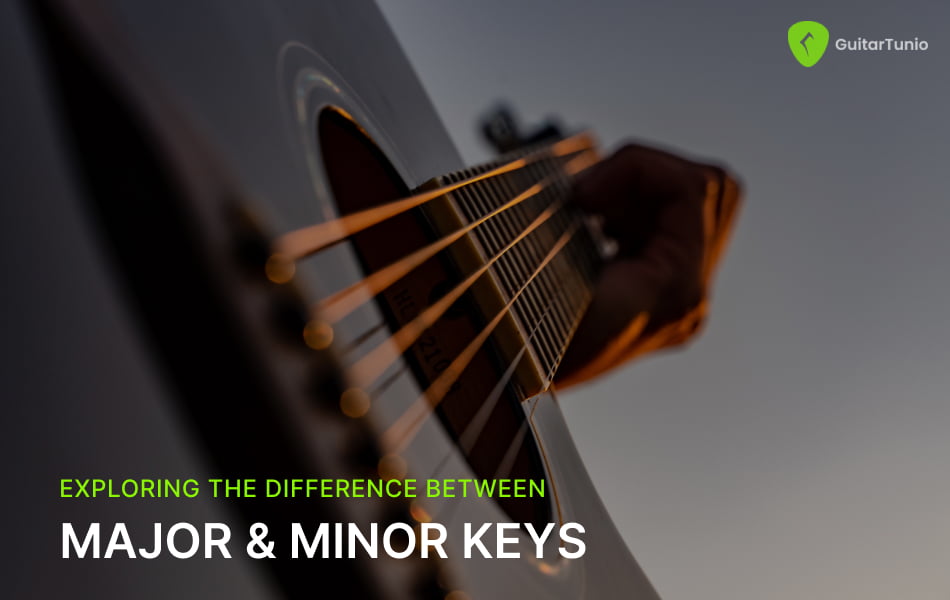G sharp Melodic Minor Scale Theory
This music theory lesson focuses on the G sharp melodic minor scale, which is a diatonic scale that starts and ends on a G#. Melodic Minor scales were primarily created to assist with melodies. The ascending melodic minor scale is similar to a major scale, except it has a flat third, while the descending melodic minor scale has the same notes as a natural minor scale.
NOTES ON THE G# MELODIC MINOR SCALE
The G# melodic Minor Scale notes ascending are: G#, A#, B, C#, D#, E#, Fx
The scale notes of the G# melodic minor descending are: G#, F#, E, D#, C#, B, A#
G# MELODIC MINOR INTERVALS
The melodic minor scale is similar to the natural minor scale, with the exception of a raised 6th and 7th degree by a semitone on the way up. The way down is exactly the same as the natural minor scale. This change results in a major 2nd interval between the 5th and 6th notes, as well as another major 2nd between the 6th and 7th notes. A major 2nd is equivalent to a tone or a whole step. For instance, E-F# is a whole step, and F#-G# is also a whole step.
Below is one octave of the G sharp melodic Minor scale with labelled intervals. It's important to note that these intervals will be the same for all ascending melodic minor scales.

The descending melodic minor scale has the same intervals as a natural minor scale, which are displayed below.

THE MELODIC MINOR SCALE FOMULAR
The melodic minor scale formula is based on the natural minor scale but rather than being the same notes both ascending and descending they are different.
- On the way up we have a sharpened 6th and 7th degree
- On the way down these are lowered so the scale becomes it’s natural formula.
HOW TO PLAY THE G# MELODIC MINOR SCALE
On piano
To play both the ascending version of the melodic minor scale, you can refer to the diagram below. The fingerings are labeled beneath the scale.

To play the G# melodic minor scale in desending, you can refer to the diagram provided below.

On guitar
The melodic minor scale can be played in various positions on the guitar.
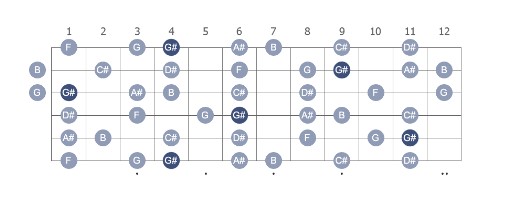
THE KEY SIGNATURE OF THE G# MELODIC MINOR
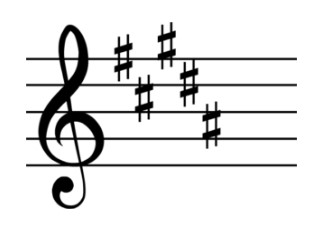
The melodic minor scale is commonly used in compositions that are in a minor key. Therefore, if we are playing the G sharp melodic minor scale, our piece will be in the key of G sharp (natural) minor. G sharp minor is the relative minor of the B major scale. Both of these scales share a key signature of five sharps.
G# MELODIC MINOR ON CLEFS
Below is the G# Melodic Minor Scale written in the treble clef, bass clef, alto clef and tenor clef including both ascending and descending.
Treble Clef
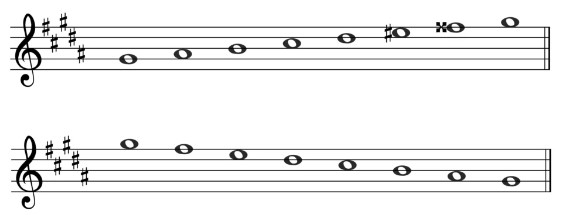
Bass Clef

Alto Clef
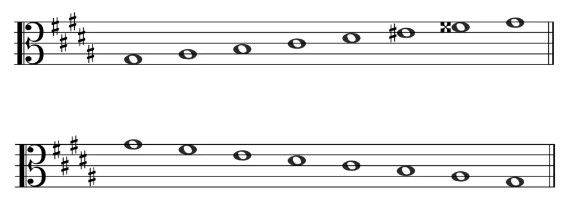
Tenor Clef

CHORDS IN G SHARP MELODIC MINOR SCALE
Chords can be constructed from the notes of G sharp melodic minor. In the ascending scale, you can see the chords starting from each note in the image below.

THE JAZZ G SHARP MELODIC MINOR SCALE
The jazz melodic minor scale differs slightly from the regular melodic minor scale. While in classical music the ascending and descending versions of the scale vary, in jazz music they are the same.
In jazz, both the 6th and 7th degrees of the scale are raised, making the jazz melodic minor scale essentially equivalent to the ascending version of the classical melodic minor scale.
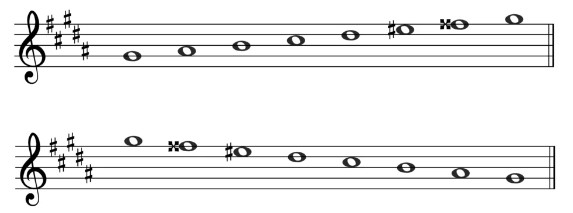
If you’re interested in learning more about music scales, chords, and musical theory, visit our Guitar tunio today


